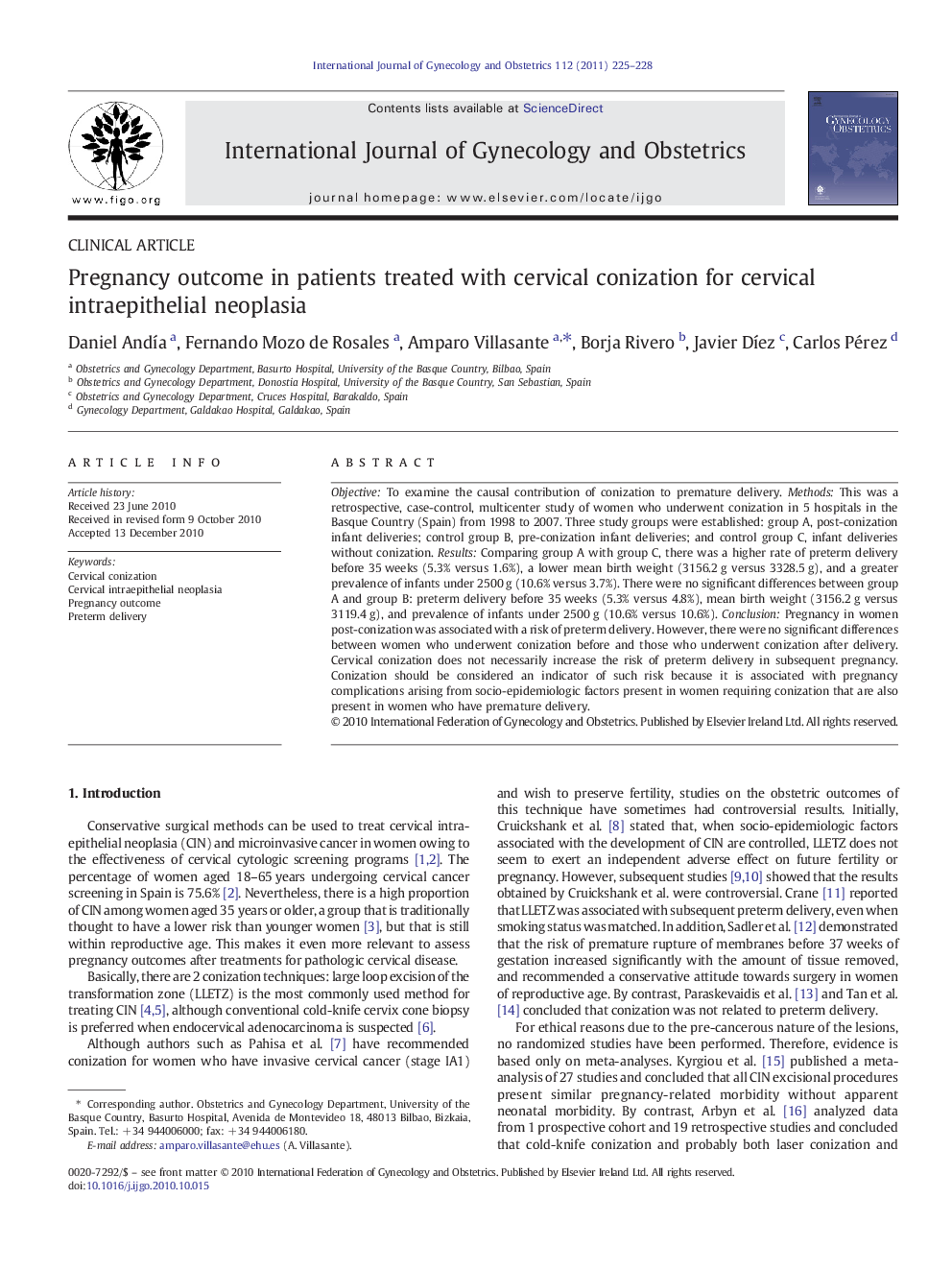| Article ID | Journal | Published Year | Pages | File Type |
|---|---|---|---|---|
| 3954411 | International Journal of Gynecology & Obstetrics | 2011 | 4 Pages |
ObjectiveTo examine the causal contribution of conization to premature delivery.MethodsThis was a retrospective, case-control, multicenter study of women who underwent conization in 5 hospitals in the Basque Country (Spain) from 1998 to 2007. Three study groups were established: group A, post-conization infant deliveries; control group B, pre-conization infant deliveries; and control group C, infant deliveries without conization.ResultsComparing group A with group C, there was a higher rate of preterm delivery before 35 weeks (5.3% versus 1.6%), a lower mean birth weight (3156.2 g versus 3328.5 g), and a greater prevalence of infants under 2500 g (10.6% versus 3.7%). There were no significant differences between group A and group B: preterm delivery before 35 weeks (5.3% versus 4.8%), mean birth weight (3156.2 g versus 3119.4 g), and prevalence of infants under 2500 g (10.6% versus 10.6%).ConclusionPregnancy in women post-conization was associated with a risk of preterm delivery. However, there were no significant differences between women who underwent conization before and those who underwent conization after delivery. Cervical conization does not necessarily increase the risk of preterm delivery in subsequent pregnancy. Conization should be considered an indicator of such risk because it is associated with pregnancy complications arising from socio-epidemiologic factors present in women requiring conization that are also present in women who have premature delivery.
